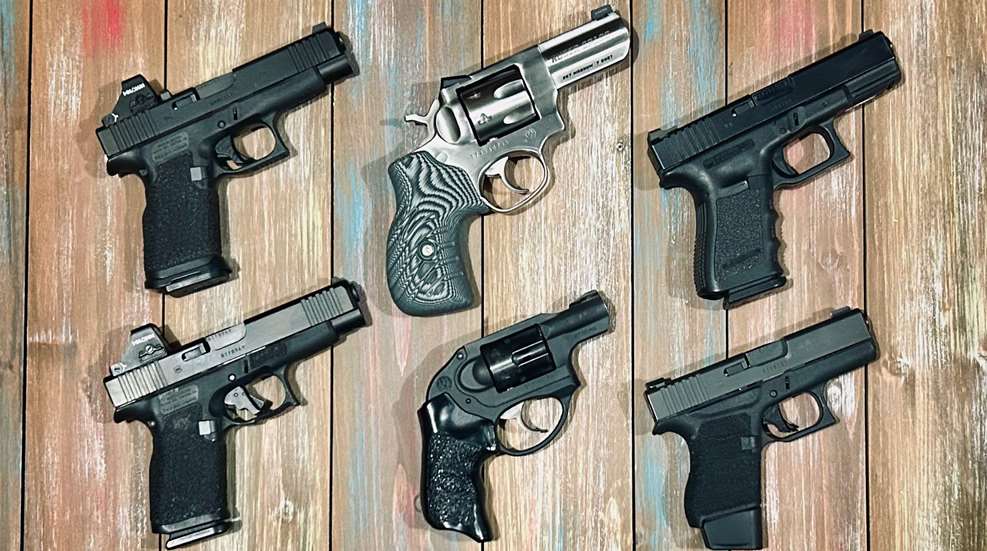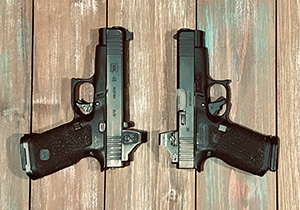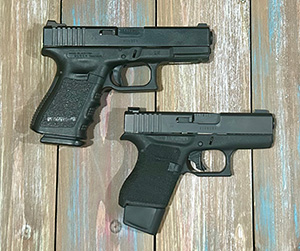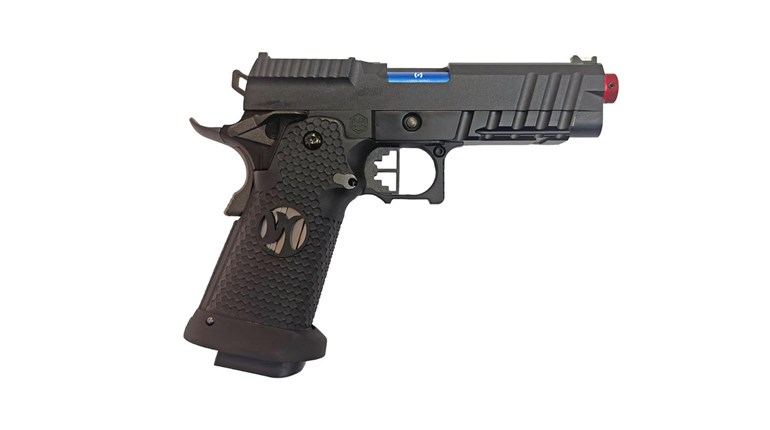
The internet is full of “Buying Your First Handgun” articles. What I’ve seldom seen addressed is the question, “What should you buy for your second handgun?” There are multiple prudent choices one could make for a second defensive handgun, depending on lifestyle, practice habits and many other factors. The two primary options, broadly speaking, are to either buy a second identical handgun as a back up, or to buy a markedly different handgun to fill a different role within one’s armed self-defense habits. Let’s examine each choice.
A Second Gun as an Identical Backup

One option is to buy a handgun identical to one’s first handgun. Why would someone do this? There are actually several good reasons to have two of the exact same gun, particularly in the self-defense context. The fact is that a handgun is a machine, and even the most reliable machines occasionally break. In the event our primary handgun breaks and needs to be sent back to the manufacturer or get worked on by a gunsmith, it is helpful to have another identical handgun that has no learning curve to use, since we are already accustomed to that particular gun make, model, and caliber.
Having an identical backup gun is also a handy way to prevent parts breakage on our carry gun that can occur through training and practice. If one intends on attending training classes and practicing regularly with one’s defensive handgun (which is highly recommended), a high round count unavoidably adds wear and tear to the gun. An uncommon but beneficial practice to deal with this is to have a dedicated training gun that is shot regularly, and an identical carry or home defense gun that sees far less use. The training gun is shot during training classes and routine practice sessions and suffers the abuse of a higher round count without being counted upon in an emergency. It can be hard to forecast when an extractor will break or a hammer-spring screw will back out just enough to keep the gun from working, and it’s far better to have this happen during a pistol class than while experiencing a gas-station carjacking. Meanwhile, the carry or home defense gun is shot only enough to prove its reliability. Then one can inspect, lubricate, and then either carry or store the handgun ready for action, without it seeing a high round count beyond periodic dusting, lubrication, and function testing as needed.
Another eventuality where having an identical backup gun comes in handy is in the event an armed, law-abiding citizen has to use their defensive handgun to preserve the lives of their loved ones or themselves. If a citizen uses a firearm during a justified defensive gun use, it is still likely that the citizen’s gun may be taken into evidence and may remain in police custody for quite some time. Having an identical backup gun to our primary allows us to seamlessly transition to use of that backup for carry or home defense while using the same holsters, quick access safe, etc. and not needing to acquaint ourselves with a handgun we might be less familiar with. Hopefully we don’t need to engage in a real-world defensive shooting, but if we do, then having an identical backup to our carry or home defense gun allows us to continue to protect our loved ones and ourselves without missing a beat.
Bonus Option: A Second Gun as a Low-Cost Trainer
Another option is to purchase a second gun as an affordable training/practice gun that mimics your primary gun enough to get productive practice from it at reduced cost. Typically this involves purchasing a gun identical to your primary gun that uses cheaper ammunition. For example, a Glock user whose primary gun is a Glock G19 might invest in a Glock G44, which is externally identical to the G19 but shoots considerably more affordable .22 LR ammunition. Likewise, the owner of a Ruger LCR or Smith & Wesson J-frame snub nosed revolver in a center fire caliber such as .38 SPL or .357 Mag might invest in a .22 LR caliber clone of their carry gun, allowing them to shoot many more rounds without becoming fatigued by recoil or ammo prices.

A Second Gun for a Different Purpose
Depending on what you bought for your first defensive handgun, it can be useful to buy a second handgun that fills a different role. Generally speaking, the three primary defensive handgun roles I would recommend thinking about are home defense, concealed carry, and deep concealment, meaning circumstances where concealment becomes an even higher priority than even accessibility, whether due to wardrobe requirements or social considerations.
If your first handgun is a full- or mid-size handgun and you find that it is too large to conceal well, then buying a smaller handgun makes sense, and the larger one can be used as a home defense gun. Likewise, if you bought a micro-compact gun that you thought would be great as a concealed carry gun, but find that it is difficult to shoot well (as micro guns can be, especially for newer shooters), then consider buying something slightly larger that can still be carried but is a bit easier to shoot competently. Let’s say that you have a mid-size or compact handgun that is sufficient for home defense and concealment most of the time, but you realize you want something even smaller for deep concealment when attending family gatherings where your anti-gun in-laws are present, or for when you have to dress up and can’t conceal your typical carry gun. Then perhaps a micro-compact is the best choice for your second handgun.
We live in an age where we’ve never had more options, and most manufacturers make models in a range of sizes. This is particularly beneficial when it comes to using different defensive handguns for different purposes. Buying guns from the same “family,” meaning from the same product line of the same manufacturer, allows us to use guns that are similar in the way they operate and feel in our hands, and minimize the amount of learning or adjustment needed switching between the guns. For example, someone using semi-automatic handguns could purchase a Glock G17 or G34 for home defense, and then buy a Glock G19 or G48 for concealed carry. Going a step further, one could even purchase a Glock G42 or G43 to have a micro-sized handgun for when one’s wardrobe or environment demanded an even more concealable pistol. A revolver shooter could do the same, purchasing a Ruger GP100 for home defense, a SP101 for concealed carry, or a LCR snub-nosed revolver for deep-concealment.
Conclusion
Ultimately, there isn’t a single correct answer on what to buy for your second handgun. Having an identical backup is beneficial to save wear and tear on your primary gun, serve as a replacement, or even just to provide a lower cost trainer in .22 LR. Filling a different niche by buying a larger or smaller gun than your first purchase is also a reasonable choice that allows you the option of selecting the ideal defensive tool depending on the circumstances. Evaluate your lifestyle and needs, and determine whether you think your better off getting an identical gun because you plan on shooting a ton and want to save wear and tear, or whether you think it’s better to get a second gun that fulfills a different role. Whichever option you choose don’t sweat it too much, since you can always cover other option with your third handgun purchase.





































